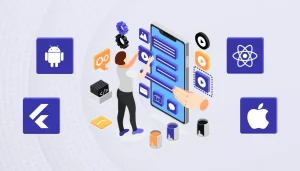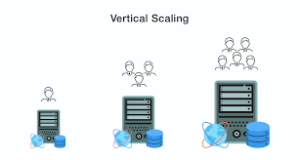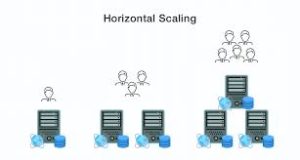Jain Software’s Top Tips for Successful Software Deployment
In Business, Official Blog, UncategorizedThe installation of software applications can be sophisticated and demanding, always involving criteria, instruments, and procedures that should be carefully selected and implemented. Over the years, Jain Software has fine-tuned our deployment approaches to contribute to formalized software solutions that conform to customer needs and expectations. In this guide, we have highlighted the key principles of successful software deployment, tactics to remember, and mistakes to avoid, as well as strategies based on our experience to help you improve your deployment experience.
1. Comprehensive Planning and Documentation
Deployment is among the most important areas that require special attention, especially that a detailed deployment plan is seminal. This plan should outline every step of the deployment process, including:
This plan should outline every step of the deployment process, including:
Objectives: One of the basic steps in the planning phase of mobile learning implementation in a given institution is to define the goals and success indicators for the deployment.
Timeline: The interventions could be put into different timeframes depending on which steps seem most important.
Resources: Determine who, with what, and what in terms of personnel, tools, and budget are to be used.
Risks: Do risks exist that can threaten the project and is any possible remedy prepared beforehand?
Document Adequately Documentation is good so that all the persons operating in a given project are fully aware of what is expected of them. It should include:
Configuration Management: Categorize the setup parameters for environments that may include development, testing, staging, and production environments.
Deployment Scripts: It is also profitable to prescribe clear instructions that must be followed when using automatic and manual deployment tools.
Rollback Procedures: Finally, it should be outlined the steps to restore previous state in the case of failure.
2. This article aims at tackling the aspect of robust testing with emphasis to quality assurance.
Testing Reviewers must conduct thorough Testing Testing is crucial to eliminate problems and disparities that are identifiable only in live environment. Jain Software employs multiple testing methodologies, including:
Jain Software employs multiple testing methodologies, including:
Unit Testing: Check parts like partitions, formats and values for their correctness.
Integration Testing: Assure the interoperability of modules, that is to say, that all the modules are able to relate to one another and function in the intended manner.
System Testing: To conclude the overall procedure of testing, it is recommended to test the complete system ‘s functionality and performance.
User Acceptance Testing (UAT): Engage the specific end-users to ensure that the software meets both their needs and the intended specifications.
Automate Testing Where Possible Automation is a powerful testing tool with the capability of enhancing the testing process and overall efficiency. To add, testers can use Selenium for automobile applications, Java for Junit applications, and python for Pytest applications and so on.
3. Continues Integration and Continues Deployment (CI/CD)
Automate the code integration and deployment process CI/CD pipelines refer to practices designed to implement newer code changes into a codebase and deploy them. This practice helps a lot in testing the code and at the same time constantly and swiftly deploying it to minimize on potential of big mistakes occurring.
Key practices include:
Automated Builds: Many teams ensure that the code is compiled and built automatically every time that changes are committed.
Automated Testing: By adopting the continuous testing approach, execute automated tests on every build to detect defects as soon as possible.
Continuous Deployment: Try to automatically move and update tested code to either staging environment or production environment.
Pros: Continuously check the status of the CI/CD pipelines and approach the team members for their input on things that can be improved. Jenkins, GitLab CI, and circle CI are some of the CI/CD solutions that you can use to improve your CI/CD flow.
4. Effective Communication and Collaboration

Culture of Cross–Functional Support Software delivery involves collaboration between development and operations and other related teams. Promote communication and make sure employees are free to express themselves and report issues they come across as they work in a team.
Collaboration Tools It is essential to extent the use of site collaboration tools like Slack, Microsoft Teams, and Confluence in order to enhance communication and sharing of documents. They avoid situations where people involved in deployment get confused and start working towards different objectives that are not aligned with the rest of the organization.
5. Incremental and Phased Deployments
Canary Releases: It is also recommended to test the software in a pilot mode, with several users involved initially. Edwards said that its actual use should be monitored prior to its application on a broader scale.
Blue-Green Deployments: Keep streaks of similar layout for the product to have two similar production lines (Blue & Green). Put new changes on the green environment and reroute traffic from blue environment to green environment when necessary and after testing.
Feature Toggles: Integrate new features that should be installed behind feature toggles where they can be switched on or off without releasing a new build of the code.
Ease and Gradual Change of Successive Releases During the successive releases, it is important to constantly check the performance as well as user feedback. This knowledge will help you make the necessary changes before setting a comprehensive course for deploying your mobile apps.
6. Ensure Security and Compliance
The Control Deployment Within Deployment Security should be a primary consideration at the deployment stage. Implement security best practices such as:
Implement security best practices such as:
Secure Coding Practices: Obey software security policies to reduce risks and security flaws.
Vulnerability Scanning: Practically, conduct the source code review and periodic monitoring of the production environments for vulnerabilities.
Access Controls: Provide adequate control measures to avoid the release of changes to生产线 by unauthorized personnel.
Industry Standards Adhere to the guidelines specific to industry tenets put in place to govern such things as the GDPR, HIPAA or PCI-DSS with regards to your deployment initiatives. Apart from this it also helps in avoiding any legal issues arising for your organization and at the same time it helps in achieving customer satisfaction among the clients as well as the users.
7. Post-Deployment Monitoring and Support
Utilise End-User Monitoring Post-deployment monitoring is important to guarantee the software runs efficiently in real environments. To achieve this, one can use bi tools such as Prometheus, Grafana, or New relic which help in tracking the performance metrics of an application, the health status of a system or monitoring user activities. Key aspects to monitor include:
Key aspects to monitor include:
Performance Metrics: Keep track of response times, quantity of processed messages, and the rate of erroneous notifications.
System Health: Check server and application for issues most related to CPU, RAM or disk space.
User Activity: The probability of users providing feedback about usability issues or unexpected behavior by the system during interaction should also be analyzed.
Incorporate post-deployment issues support Although it is likely that the majority of concerns will be taken prior to or during the deployment the steps mentioned above should be complemented by the following to establish a support plan in case of issues arising post-deployment. This includes:
Incident Response: It is also important to have a clear, easy-to-follow process for efficiently addressing incidents as they occur.
Support Channels: Establish clear lines of communication regarding users’ concerns or requests for help.
Regular Updates: Ensure to set tones of interfering frequencies to incorporate readiness update and fix the bug, and especially add new unique features.
8. Continuous Feedback and Improvement
Collect User Feedback This is important because collecting user feedback is a great way of adding value to your application software. Educate your online audience and encourage them to share their stories or a tip. Some of the ways of gathering this information include questionnaires, feedback forms, and sample testing sessions.
Iterate and Improve Apply these improvements for making incremental changes successively to the software. Devise a way to implement customer features through agile development to constantly release incremental upgrades, testers to identify and fix bugs for new releases. By doing this it is possible to find that your needs and requirements will be catered for in subsequent releases of the software.
Hold Meetings – Post-Mortem Meetings After releasing a new update or feature, you should meet to assess what went well and what did not. It is helpful to engage all stakeholders in such a process in order to assess as many parameters as possible.
9. Leverage Automation Tools
Reduce Human Error Automation allows for certain tedious tasks to be performed repeatedly while minimizing the chances of errors that a human would make.
Automate repetitive tasks such as:
Code Compilation: Set up triggers to compile code relating to a specific product frequently to gain more data on how this product is being used.
Testing: Use automated testing frameworks to execute the test since it will be routined.
Deployment: Introduce explicitly scripts and tools to be used as the working means required to deploy properly.
Configuration Management Configuration management can be performed using several tools, these include: Ansible: This tool is used to manage the configuration of server and environment. It helps keep compliance with best practices, and proper settings helping to prevent configuration drift.
10. Training and Skill Development
There must be good awareness among the team: The team must be aware of the new tools and latest technologies or techniques being used. Invest in continuous learning opportunities such as:
Invest in continuous learning opportunities such as:
Training Programs: It may also be useful to provide people with regularly-scheduled training and workshops that cover different topics.
Certifications: This is an important factor, which should be promoted among employees and team members – the achievement of requisite certifications.
Conferences and Webinars: Periodically offer your staff information on accessing specific industry conferences and Webinar sessions contents for updating knowledge of current trends.
Create a culture that is oriented towards learning. The first element within managing learning is creating and maintaining a culture that supports learning. Promote cross knowledge among the team members and minimize on the gaps that makes someone restrict the knowledge gained to their own use only. This way it not only promotes individual efficiency but also fortifies the team capacity and potential.
Conclusion
Successful deployment of the software is a complex process that involves developments phases, testing phases, and interactions with a variety of Customer organizations. However, when it comes to your turn at deployment, here are some tips by Jain Software that may help out in getting the best outcome out of the strategic move. As you plan, develop, implement and evaluate computer based projects always bear in mind the following key success factors conduct proper planning, do your testing well, maintain effective communication, and consider it inimical to stop learning and improving by modifying the process as done before. Given these aspects enabled, you can offer the users the most satisfactory solution in the form of software that will beneficial for the business.













